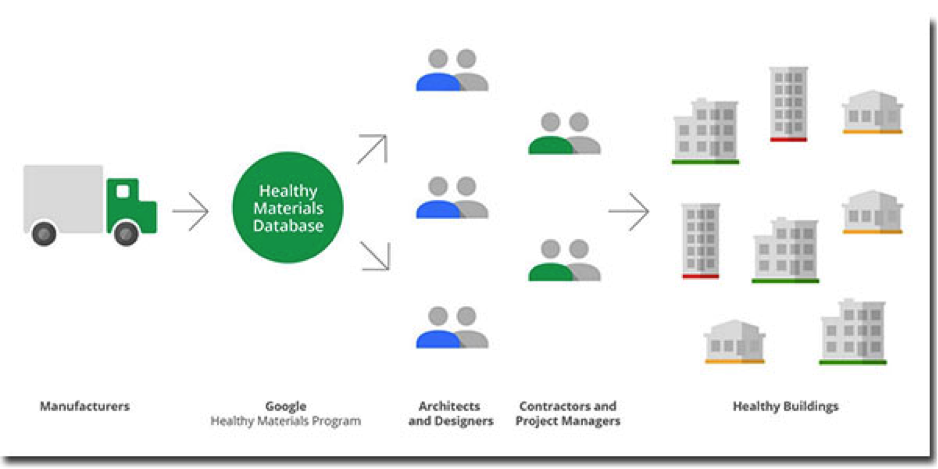Air quality is one of the biggest threats to our health & well-being in the built environment. And even though these negative effects can be precipitated through building materials, there is often a disconnect between building design and public health.
As a recent Harvard study suggests, the types of building materials used and ventilation and filtration system configurations can have a major impact on health and productivity. The study analyzed the performance of office workers in both ‘green’ and ‘non-green’ building scenarios, measuring the impact of ventilation, chemicals, and carbon dioxide. The conclusions indicate cognitive performance scores in green environments were double that of conventional environments. This demonstrates that building managers, architects, and designers should consider these factors in order to improve indoor air quality, remove toxic chemicals, and lower carbon dioxide concentration.
Through their New Healthy Materials Program, Google is one company that has begun to incorporate this line of thinking into their buildings to foster a more energized and healthier work environment. The program database was created ‘to identify the healthiest products and materials for Google buildings around the world’. All products and materials go through a screening and scoring process that rewards transparency. Criteria are based on established standards such as the Health Product Declaration, GreenScreen, Cradle 2 Cradle and aligned with LEED version 4 rating system. Google also developed Portico, the Healthy Materials Tool, to help further product and material information transparency in order to make informed decisions. Using this tool, manufacturers can keep track of their inventory and level of transparency while architects and contractors can determine what meets Google’s criteria for buildings.
Ultimately, increasing awareness of healthy building and indoor air is becoming evident in initiatives such as the New Healthy Material Program, the growing conversation among architects and designers, implementation of standards (e.g. Delos’ WELL Building Standard), and development of innovative smart office systems.
Resources:
http://www.curbed.com/2016/3/23/11288738/office-air-quality-cognition-harvard-study
https://support.google.com/healthymaterials/answer/6076896?hl=en&ref_topic=6079430

